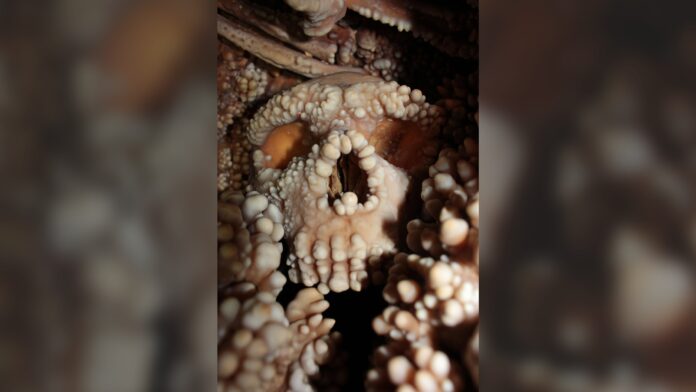For decades, a prominent theory suggested Neanderthals’ large noses evolved to warm and humidify air in cold climates. New research, however, challenges this long-held belief. A meticulously preserved Neanderthal skull, known as “Altamura Man,” offers the most complete fossil evidence to date, revealing that Neanderthal nasal structures were not uniquely adapted for cold weather.
The Altamura Man: A Unique Specimen
Discovered in 1993 in a cave near Altamura, Italy, this skeleton dates back 130,000 to 172,000 years. Unlike other Neanderthal fossils, Altamura Man remains in situ – undisturbed in the cave – encased in calcite formations that protect the delicate nasal bones. This preservation is critical: previous studies relied on fragmented or incomplete skulls, leading to assumptions about Neanderthal nasal anatomy.
The Virtual Reconstruction
Researchers used endoscopic probes and 3D photogrammetry to digitally reconstruct Altamura Man’s nasal cavity without disturbing the fossil. This allowed them to examine the ethmoid, vomer, and inferior nasal conchae – bones rarely found intact in Neanderthal remains. The results were surprising: the internal structures of Altamura Man’s nose were not significantly different from those of modern humans.
Debunking the Cold-Adaptation Theory
The prevailing theory posited that Neanderthals’ large noses and sinuses maximized airflow, warming and humidifying air before it reached the lungs in frigid environments. However, the Altamura Man’s nasal cavity does not support this claim. While Neanderthals generally had larger nasal openings, the internal structures were not uniquely adapted for cold weather.
Alternative Explanations
Instead of focusing solely on cold adaptation, researchers suggest Neanderthal noses may have evolved to efficiently process air for their larger bodies and higher metabolic needs. The massive build of Neanderthals required a robust respiratory system, and a large nasal cavity could have facilitated this.
Intraspecies Variation
The study also highlights the potential for variation within the Neanderthal species. The Altamura Man’s nasal anatomy differs from some previous reconstructions, suggesting that not all Neanderthals possessed the same nasal adaptations. More research is needed to understand the full range of variation within the species.
Broader Evolutionary Context
Early Homo species also had wide noses, and modern human populations in colder climates exhibit similar nasal features. This suggests that nasal width may be more closely linked to body size, metabolic rate, and respiratory efficiency than to cold adaptation alone.
Conclusion: The Altamura Man’s remarkably preserved skull challenges the long-held belief that Neanderthal noses evolved solely to warm air in cold climates. The study suggests that nasal anatomy was likely shaped by a combination of factors, including body size, metabolic needs, and respiratory efficiency, rather than a singular adaptation to cold weather. This finding underscores the importance of studying well-preserved fossils to refine our understanding of human evolution































